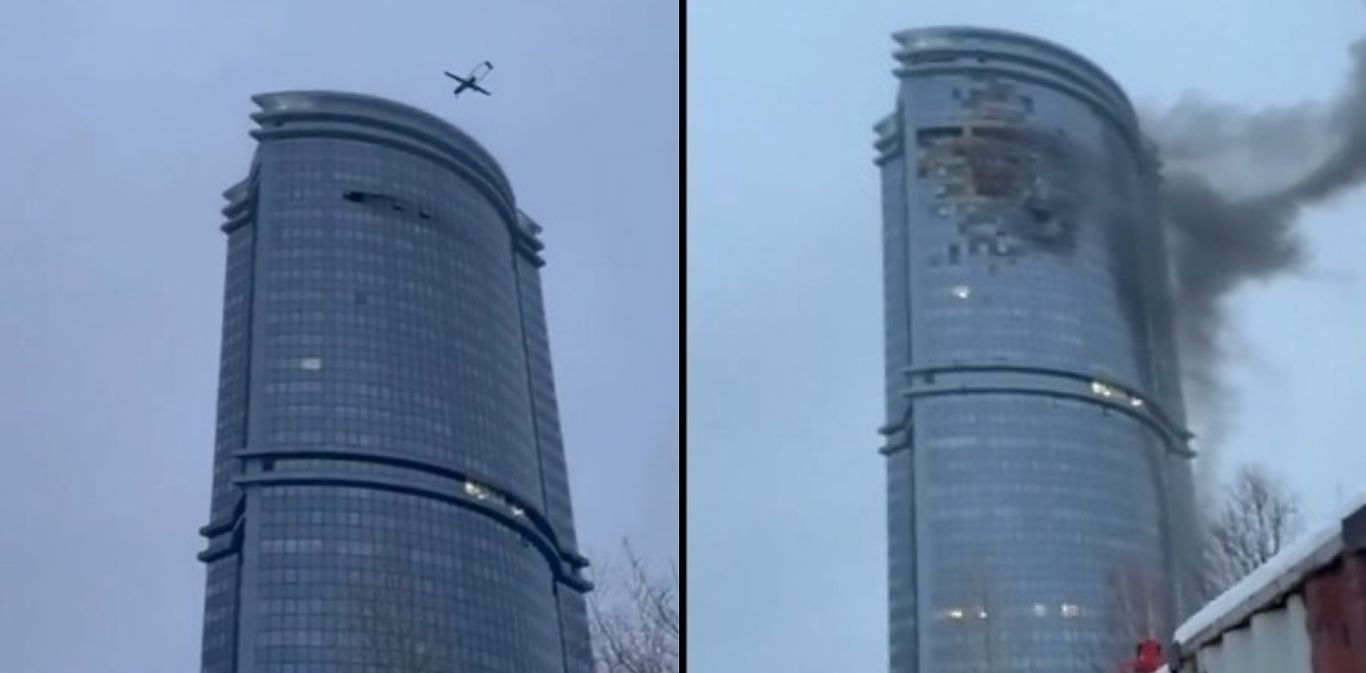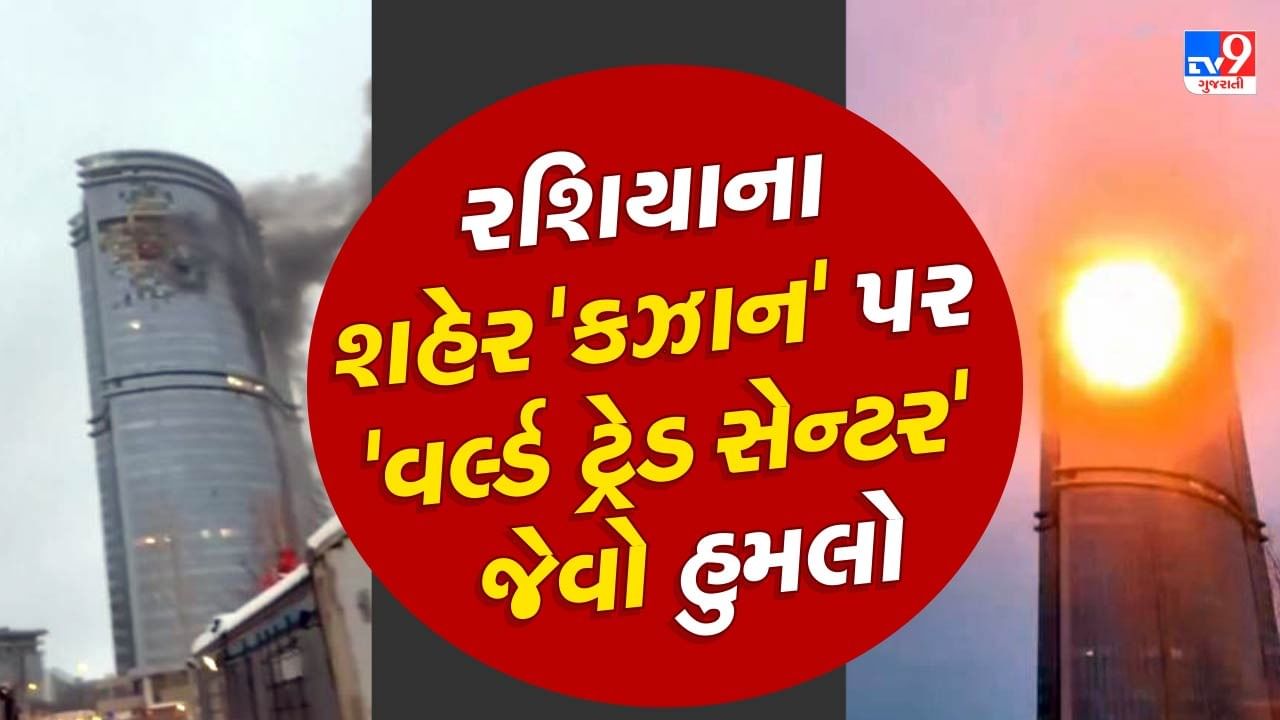Kazan drone attack: The recent alleged drone incident in Kazan has sparked widespread concern, raising questions about regional security, drone technology capabilities, and the potential motives behind such an attack. This analysis delves into the event’s circumstances, examining the reported damage, casualties, and the timeline of events. We will explore the technological aspects of the potential drones involved, the security implications for the region, and the international political responses.
The recent drone attack on Kazan has raised concerns about escalating tensions. This incident follows a pattern of similar attacks, prompting comparisons to the ongoing conflict; for more information on the broader context, you can check out this report on ukraine drone attack on russia. Ultimately, the Kazan attack highlights the increasing vulnerability of civilian infrastructure to drone warfare and the need for enhanced security measures.
Further investigation will cover public perception, media coverage, and the ongoing investigative procedures. We will also analyze potential motives, identify possible actors, and discuss the long-term consequences of this incident, considering its economic, social, and political ramifications. This comprehensive examination aims to provide a balanced and informed understanding of this significant event.
The Kazan Drone Attack: An Analysis
The alleged drone attack on Kazan, Russia, in [Insert Date of Alleged Attack], sparked significant international attention, raising concerns about the evolving capabilities of drone technology and its implications for regional security. This analysis examines the incident’s various aspects, from the technological capabilities of the potential drones involved to the geopolitical repercussions and the ongoing investigations.
Event Overview: The Kazan Drone Attack

Reports emerged on [Insert Date] detailing an alleged drone attack targeting [Insert Target Location in Kazan]. Initial reports suggested [Insert Initial Reports: e.g., multiple drones, specific targets hit]. The incident reportedly resulted in [Insert Reported Damage: e.g., minor property damage, no casualties]. Subsequent investigations and official statements have [Insert Details on Official Statements and Investigations]. A timeline of events includes [Insert Timeline: e.g., initial reports, official responses, ongoing investigations].
Key players allegedly involved include [Insert Key Players and Alleged Roles: e.g., potential drone operators, government officials].
Drone Technology and Capabilities
Several types of drones could potentially have been used in such an attack, ranging from commercially available models modified for offensive purposes to more sophisticated military-grade UAVs. The operation would have required drones with a sufficient range to reach Kazan from a likely launch point, a payload capacity to carry explosives or other harmful devices, and advanced navigation systems for precise targeting.
The challenges include factors like weather conditions, counter-drone measures, and the risk of detection and interception. The success of such an operation would depend on a combination of technological sophistication and operational expertise.
Security and Defense Implications

The incident highlights vulnerabilities in Kazan’s air defense systems and underscores the growing threat posed by drone technology. The potential for future attacks using similar tactics necessitates a reassessment of security protocols. A comprehensive security protocol might involve a multi-layered approach including enhanced surveillance systems, drone detection and jamming technologies, and improved communication and coordination among security agencies. Countermeasures could range from deploying anti-drone systems to establishing no-fly zones over critical infrastructure.
International and Political Responses
The alleged attack elicited varied responses from international governments and organizations. [Insert Government Responses: e.g., condemnation from Western nations, muted response from allies]. The differing reactions reflect existing geopolitical tensions and varying perspectives on the incident’s attribution and implications. The potential political consequences include [Insert Potential Political Consequences: e.g., heightened tensions, renewed calls for stricter drone regulations].
The incident’s impact on international relations and geopolitical dynamics remains a subject of ongoing analysis.
Public Perception and Media Coverage, Kazan drone attack
Public reaction to the alleged attack has been diverse, with domestic and international opinions shaped by existing political viewpoints and media portrayals. Media coverage varied widely, with some outlets focusing on the alleged attack’s potential perpetrators and motives, while others emphasized the technological aspects and security implications. The media’s framing of the event significantly influenced public perception, contributing to different interpretations of the incident’s significance and implications.
Investigative Procedures and Evidence

The investigation into the alleged attack likely involves a multi-faceted approach, combining forensic analysis of potential drone wreckage, digital forensics to trace communication signals, and intelligence gathering to identify potential perpetrators. Potential evidence includes drone debris, flight data, witness testimonies, and digital footprints. A hypothetical investigative report might look like this:
| Date | Event | Location | Evidence |
|---|---|---|---|
| [Insert Date] | Initial reports of drone activity | [Insert Location] | Witness accounts, security camera footage |
| [Insert Date] | Discovery of drone debris | [Insert Location] | Physical examination of debris, forensic analysis |
| [Insert Date] | Interviews with potential witnesses | [Insert Location] | Witness statements, corroborating evidence |
| [Insert Date] | Analysis of digital data | [Insert Location] | Communication intercepts, drone flight logs |
Potential Motives and Actors
Several motives could be attributed to the alleged attack, ranging from [Insert Potential Motives: e.g., political protest, territorial disputes, criminal activity]. Potential actors could include [Insert Potential Actors: e.g., dissident groups, foreign actors, individuals]. Attributing responsibility for the attack presents significant challenges due to the lack of clear evidence and the potential for false flag operations.
Long-Term Consequences and Future Implications
The long-term consequences of the alleged drone attack on Kazan and the broader region could be significant. Changes in security protocols and infrastructure are likely, along with potential impacts on tourism and investment. The incident may also accelerate the development and deployment of counter-drone technologies. Potential long-term consequences include:
- Increased security spending and investment in counter-drone technologies.
- Changes in urban planning and infrastructure to mitigate vulnerability to drone attacks.
- Heightened social anxieties and concerns about national security.
- Potential shifts in regional geopolitical dynamics and international relations.
- Economic impacts on tourism and investment in the affected region.
The Kazan drone attack serves as a stark reminder of the evolving nature of modern warfare and the potential vulnerabilities of even seemingly secure locations. The incident underscores the need for enhanced security protocols, advancements in drone detection and countermeasures, and a deeper understanding of the motivations behind such attacks. Continued investigation and international cooperation are crucial to preventing future occurrences and mitigating the potential for escalating regional instability.
Recent reports indicate a concerning escalation in drone activity near Kazan. The incident highlights the growing vulnerability of urban areas to aerial attacks. For more detailed information on this evolving situation, please refer to this comprehensive report on the kazan drone attack. Understanding the specifics of this event is crucial for assessing future security risks and implementing appropriate countermeasures to prevent similar incidents in Kazan and other cities.
The long-term consequences, from economic recovery to shifts in geopolitical dynamics, remain to be fully assessed, highlighting the enduring impact of this event.
FAQ Summary
What type of damage was reported?
Reports vary, but initial accounts suggest varying degrees of property damage, potentially including infrastructure and civilian structures. Specific details are still emerging from official investigations.
Were there any confirmed casualties?
The recent drone attack on Kazan highlights the escalating global concerns surrounding unmanned aerial vehicles. The incident prompts reflection on similar events, such as the unfortunate florida drone accident , which underscores the importance of safety regulations and responsible drone operation. Ultimately, both incidents emphasize the need for stricter international guidelines to prevent future misuse and accidents involving drones.
The number of casualties, if any, remains unclear and is subject to ongoing investigation and official confirmation.
What is the current status of the investigation?
Investigations are ongoing, with authorities likely focusing on forensic evidence, witness testimonies, and intelligence gathering to determine the perpetrators and their motives.
What are the potential long-term economic impacts?
Potential long-term impacts include disruptions to tourism, infrastructure repair costs, and potential investor hesitancy, though the full economic consequences are still being assessed.
